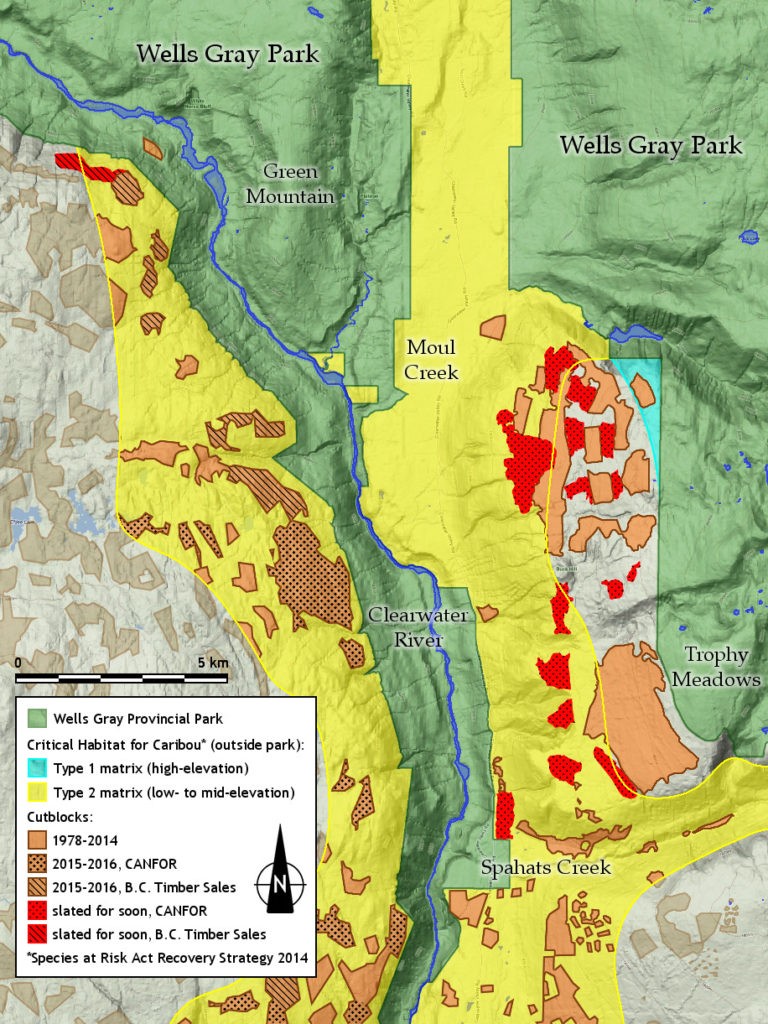SO, HOW DOES EXTINCTION HAPPEN IN CANADA, ANYHOW?
Deep-Snow Mountain Caribou are survivors. To drive them to the brink has taken decades of unstinting effort by many hands. In recent decades those hands have known very well what they were about – designer extinction.
It’s safe to say that no Canadian government has ever been given a mandate to engage in deliberate extinction; nor is deliberate extinction upheld by Canadian law. It is, rather, an unequivocal instance of power uncoupled from social responsibility or, in Hannah Arendt’s memorable formulation, “the banality of evil.” From here it is possible to trace a direct path to the Monsanto boardroom.
Broadly speaking, the pending extinction of Canada’s endangered Deep-Snow Mountain Caribou traces to our overwhelming societal emphasis on the world as resource – something we own – rather than as home, a place we inhabit. Thinking of the living world this way leads well past caribou extinction to global warming, the sixth global extinction, pandemics and very likely to much, much worse.
Viewed more narrowly, deliberate extinction traces to a systemic flaw in Canada’s current social order – a strong allegiance to short-term profit at the cost of long-term sustainability. Leading the charge in the case of Deep-Snow Caribou is a small number of questionable individuals in industry and government, abetted by a rather larger contingent of equally questionable individuals in caribou science and professional reliance.
These individuals know who they are. Shamefully, their actions invite censure of their respective organizations and government bodies:
INDUSTRY
First, censure of CANFOR Corp. for failing to live up to its social license. Consider the chasm that separates CANFOR’s public commitment to its social license from its actions on the ground. First, here’s what CANFOR’s president said about his company on 9 July 2012: “We will not support actions that impact parks, riparian areas or areas that provide critical habitat for species at risk, or other important environmental values such as biodiversity and old growth.” And now, here’s how CANFOR actually behaves out in the real world: Canfor rushes to clearcut critical habitat for endangered Mountain Caribou.
BC GOVERNMENT
Second, censure of the B.C. Liberals under Gordon Campbell and later Christy Clark for myopic environmental deregulation that between 2001 and 2017 punished the environment and hollowed out rural communities. Among other unfortunate outcomes, their environmental policies betrayed the efforts of earlier B.C. governments to give lasting sanctuary to B.C.’s wildlife, not least the Deep-Snow Mountain Caribou: Decline of Mountain Caribou in Southern Wells Gray Park.
Third, since 2017, censure of the B.C. New Democrats under John Horgan, whose environmental policies have if anything accelerated the decline of Canada’s only endemic ungulate and, in the process, blighted the long-term economic prospects of many rural communities throughout the range. How? By allowing industry: first, to log in a few years a volume of trees that, at lower rates of cut, could have sustained these communities indefinitely; and second, that done, to close their mills and walk away.
FEDERAL GOVERNMENT
Fourth, censure of the honourable Catherine McKenna, Canada’s Minister of Environment and Climate Change from 2015 to 2019, for shirking her responsibility under Canadian law to adjudicate, in timely fashion, four emergency petitions submitted in 2017 on behalf of the legally threatened Deep-Snow Mountain Caribou: Emergency Alert Only when threatened by legal action did she announce that seven Deep-Snow Caribou herds warrant emergency protection. This was in June 2018, 14 months after receipt of the first emergency order. Even so, no further action was taken, either by McKenna or, since 2019, her replacement, the honourable Jonathan Wilkinson, who continues government foot-dragging on this file three years after submission of the emergency protection petitions. In the mean time, the BC government has permitted logging of 90,000 ha of federally designated critical habitat for caribou, with CANFOR set to log thousands more ha in 2020.
CARIBOU SCIENCE
Fifth, censure of many BC and Alberta caribou biologists, for prioritizing predator culls over habitat protection as a cornerstone of Deep-Snow Caribou conservation – a move that ignores their own key finding that loss of oldgrowth forests is strongly correlated with loss of caribou. Meanwhile, it is worth noting that there is simply no statistical support for the thesis that killing predators can recover Deep-Snow Caribou. In such a circumstance, it seems fair to ask how support for a BC government “recovery strategy” that plays directly into the hands of corporate forestry can be harmonized with the ethical responsibility of these professional biologists for the welfare of caribou as a whole.
PROFESSIONAL BODIES
And sixth, censure of BC’s professional bodies, the Association of BC Forest Professionals and the College of Applied Biology, for failure over many years to discipline their members for instances of – by any objective measure – unethical behaviour working against the long-term public interest. By their inaction, these organizations have contributed materially to the pending extinction of the Deep-Snow Mountain Caribou. They have much to atone for: Unprofessional Reliance.
Whatever legacies these individuals, organizations and government bodies leave behind must now include their role in driving toward extinction, at a critical point in its history, a Canadian icon of mountain wilderness.
